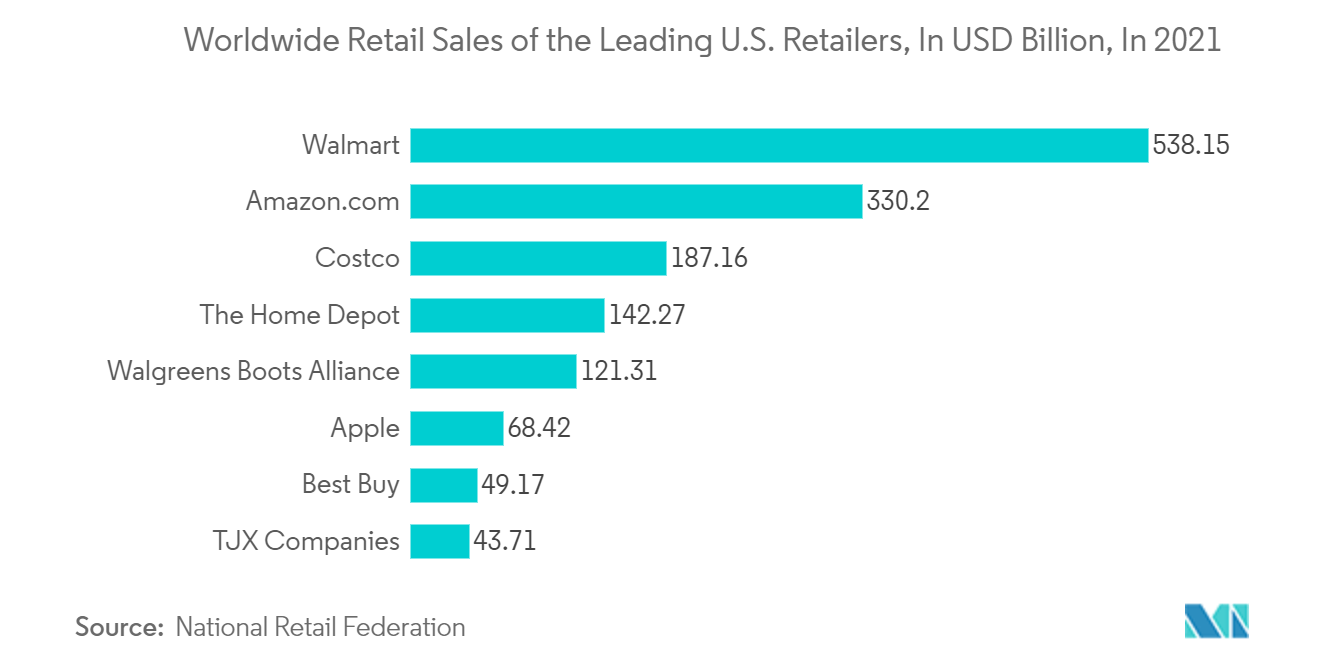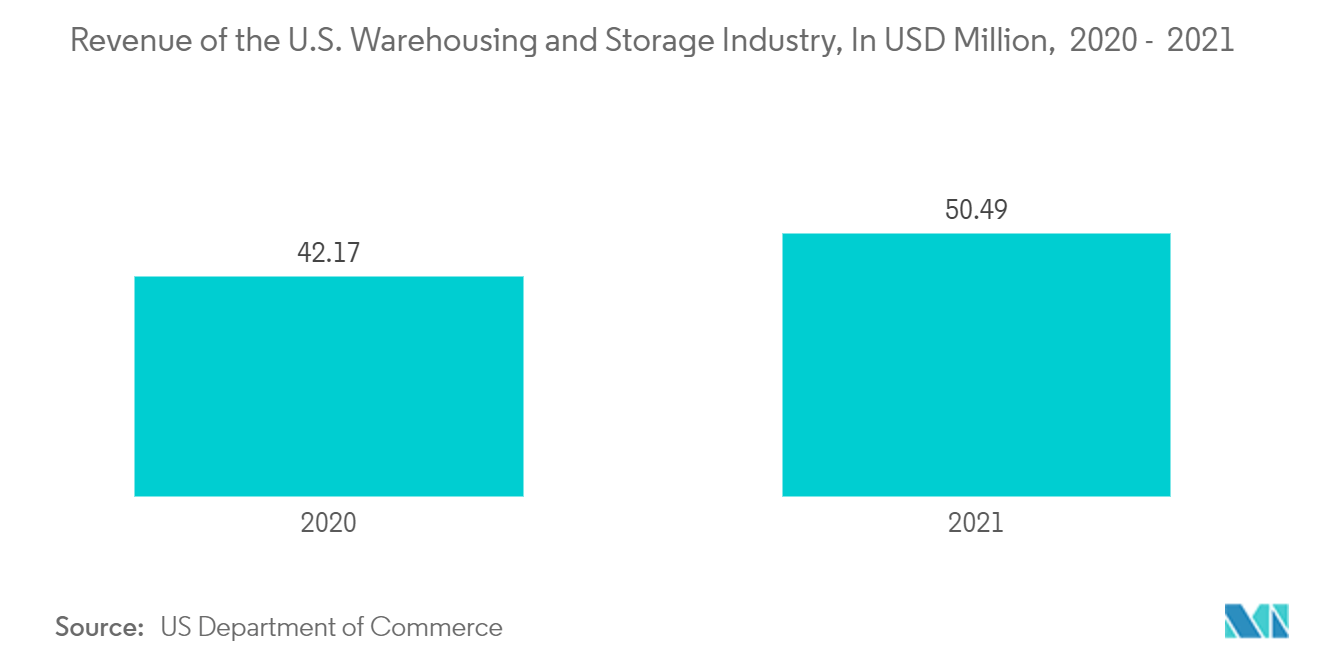Market Trends of North America Automated Material Handling Industry
This section covers the major market trends shaping the North America Automated Material Handling Market according to our research experts:
Retail/Warehousing/Logistics to Hold Significant Share
- The United States boasts a robust E-commerce ecosystem. According to the US Census Bureau, from January to March 2022, US retail e-commerce sales accounted for almost USD 250 billion, marking a 2.4% increase compared to the previous quarter. The rapidly evolving retail market is encouraging distribution centers to find and use innovative, flexible, and automated approaches to e-commerce order fulfillment.
- E-commerce is a significant driving factor for the demand from automated distribution warehouses, as consumers seek ever-shorter delivery times. Also, changing consumer needs and innovation in delivery methods are expected to drive the US retailing market. With the e-commerce market expected to witness robust growth, the demand for AMH equipment from the US retail end-user segment is also expected to increase.
- With a retail backroom or distribution center that is easy to steer and is well-organized, automated material handling equipment help ensure overall customer satisfaction and makes stocking and inventory more efficient. For instance, companies like REB furnish, deliver, and install material handling and storage systems nationwide in the United States, focusing on meeting customer satisfaction.
- Retail is one of the major industries in which the requirement for conveyors and sortation is important. It helps online retailers to sort goods and enhance delivery efficiency. Furthermore, retail companies are also adopting this automated material handling equipment to perform last-mile delivery.
- With a retail backroom or distribution center that is easy to steer and is well-organized, automated material handling equipment help ensure overall customer satisfaction and makes stocking and inventory more efficient. For instance, companies like REB furnish, deliver, and install material handling and storage systems for the retail sector nationwide in the United States, focusing on meeting customer satisfaction.

United States to Hold Major Share
- The United States is the most advanced economy in the world. The country's manufacturing sector, which is a huge source of demand for the AMH market, hinges on the dominant US economy, accounting for 82% of the region's economic output.
- The country has a high trading profile and a highly active e-commerce sector, which increases the demand for warehouse space. Moreover, the North American airport industry is one of the largest airport industries in the world. It provides services to about 1,011.5 million domestic and international passengers every year. It is also home to some of the world's biggest airports and is expected to bolster the adoption of automation to ensure no disruptions in the business model.
- The United States is home to one of the largest automotive markets in the world, with the presence of various global vehicle and auto part manufacturers. With the increasing demand for automotive vehicles and the United States being one of the largest exporters and manufacturers (second-largest), coupled with increasing investment, the market studied is expected to witness significant demand from the US automotive industry.
- Additionally, the US pharmaceutical industry is experiencing slow growth with the changing pharmaceutical landscape and diminished productivity in R&D. Digitalization and automation in the region, at every point along the value chain, help the pharmaceutical industry get pharmaceuticals from the lab to the patient more swiftly. New policy reforms are expected to influence market growth over the forecast period. Trends, such as patient-centric healthcare and biosimilars, is expected to positively impact the growth of the market studied.
- Furthermore, the increasing labor rates in the region are also developing the need for new technologies which help in reducing the dependency on laborers for material handling. According to Statistics Canada, Labour costs per unit of output of Canadian businesses rose 2.7% in the second quarter of 2021, following slight increases in the previous two quarters. This was the highest quarterly growth rate in a year.


